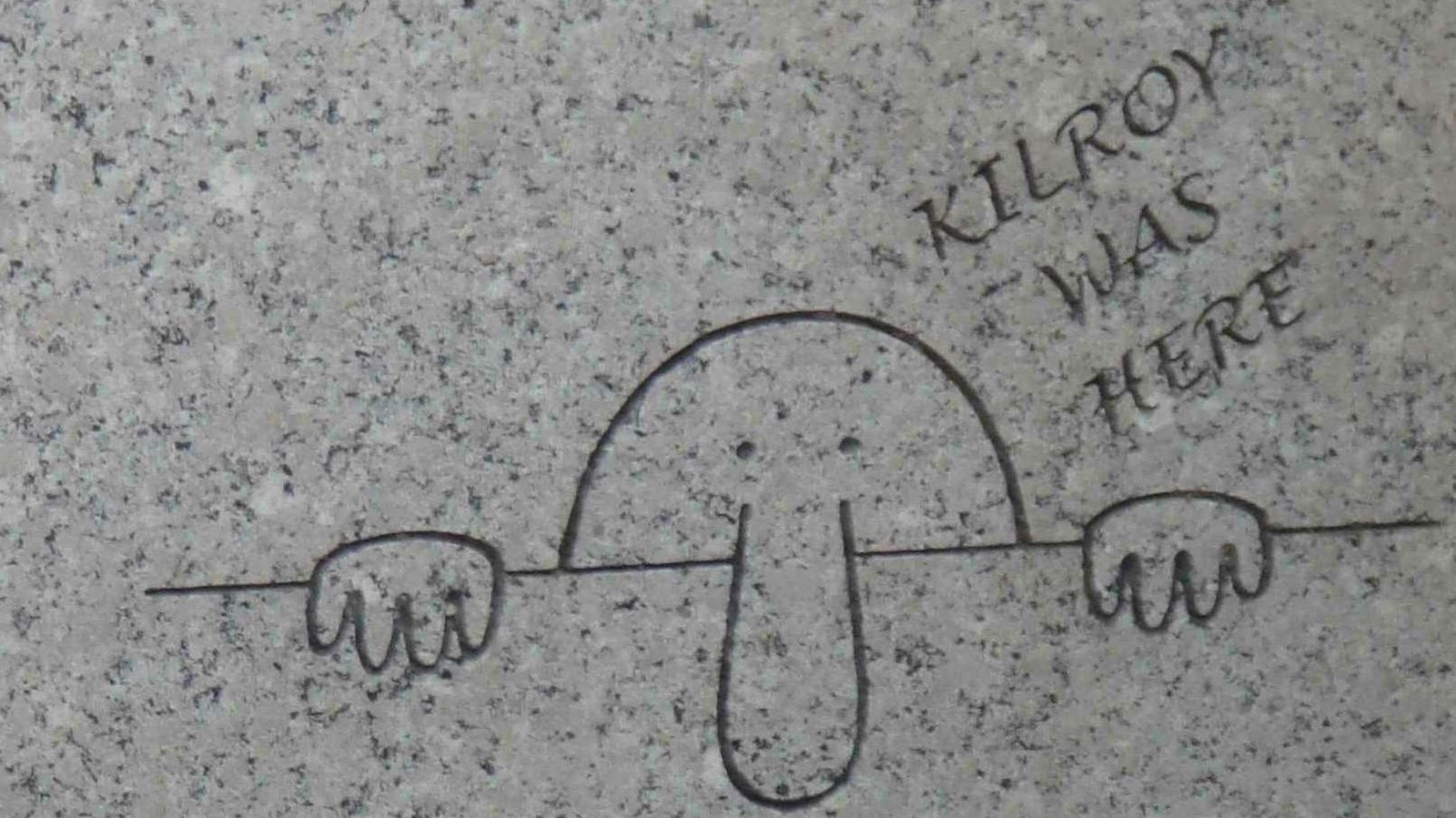“Kilroy was Here”: A Symbol of Pride for American Soldiers

The American phrase, “Kilroy was here” was popularized by GIs during World War II, often appearing in graffiti alongside a cartoon doodle of a bald-headed man with a prominent nose peering over a wall. Although the origins of the expression and accompanying drawing have been widely debated over the years, the graffiti has always held great meaning for American Armed Forces.
Universal Sign of Hope & Pride
During WWII, United States servicemen began scrawling the Kilroy text and picture on walls and other surfaces wherever they were stationed, encamped or just passing through. The comical cartoon, which came to be known as simply Kilroy, appeared on every surface imaginable, including ship holds, rail cars, bridges and more throughout Japan, Italy, France and the Philippines. It is even rumored to have shown up in Joseph Stalin’s private bathroom at the Potsdam Conference in 1945.
Despite the fact that the use of graffiti and the defacing of public property was discouraged, Kilroy became one of the war’s most widespread inside jokes. But it was much more than a source of humor for the men in the foxholes. When they encountered a Kilroy, it imbued a sense of pride, knowing that there was no place in Europe that the Allied forces couldn’t reach. Even more importantly, it provided comfort and hope, as a sign that American soldiers had been there before them and survived.
For enemy forces, Kilroy stood for something far more ominous. The axis-nations were notably confused and disturbed by the frequency of the graffiti throughout Europe. In fact, it’s believed that Adolf Hitler and German intelligence considered the phrase to be a code name for a high-level Allied spy.
Origins of Kilroy
The exact origins of the Kilroy phrase are highly debated, and several men by the name of Kilroy have claimed they were the inspiration. One of the more popular theories involves an American shipyard inspector at the Fore River Shipyard in Quincy MA by the name of James J. Kilroy. He reportedly marked the work he had inspected and approved with the phrase “Kilroy was here”.
Another theory involves Sgt. Francis J. Kilroy, who claims the phrase originated when he was ill with the flu and his friend Sgt. James Maloney wrote the phrase, “Kilroy will be here next week” on a barracks bulletin board in Boca Raton FL. According to the sergeant, a shortened version of the phrase was picked up among other airmen and spread abroad.
Meanwhile, the cartoon of the bald-headed man peering over the wall is believed to have originated with British forces during World War I. The long-nosed character was referred to as Mr. Chad, and when American forces encountered the British sketch during World War II, they ostensibly merged the image with the phrase “Kilroy was here”.
Kilroy in Pop Culture & the WWII Memorial
Although the popularity of the Kilroy cartoon subsided in the 1950s, references to the image and phrase continue to appear throughout pop culture, including a 1967 Peanuts comic strip, a 1975 episode of M*A*S*H, the 1983 album by Styx, and in the opening credits of the Community TV series (2009-2015).

The Kilroy image and phrase have also been fittingly etched into the stone at the WWII Memorial in Washington DC. In fact, there are two symmetrical Kilroys, one near the backside of the Pennsylvania pillar and the other by the Delaware pillar.
“Kilroy wuz Here” Flag
To honor this iconic symbol in American history, Gettysburg Flag Works has created the “Kilroy was here” flag. Made in the USA for indoor or outdoor use, the flag is digitally printed on durable all-weather nylon with four rows reinforced stitching. The Kilroy flag makes a perfect display piece for veterans, WWII history buffs and pop culture enthusiasts – no defacing of public property required.

I have been drawing Kilroy since I was little. But I never knew the history and the pride behind it. I was never an artist but I could draw Kilroy and did a lot Thanks for the history lesson especially since having many family members in the war at that time. With what we have going on in our country these days it makes me very happy and proud. Thanks!
I’m 80 and have used this doodle lots over the years but with no knowledge of its origin. So happy to have some history of it thank you.